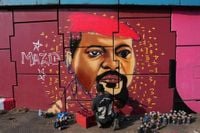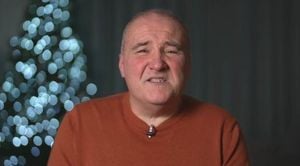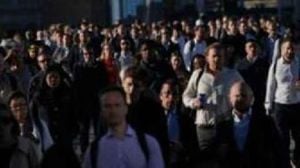On a bustling afternoon in Conakry, Guinea’s capital, a man known to locals as Chimere—French for chimera—stood before a blank wall just off the city’s main thoroughfare. With a confident glance at his surroundings, Omar Diaw, as he’s known outside the art world, began to spray-paint. His fellow artists unloaded dozens of paint cans onto the roadside, drawing little more than a passing glance from civilians and police. “They know who I am,” Diaw said with an air of assurance, though it wasn’t immediately clear who “they” were. What was clear, however, was that something remarkable was unfolding in the heart of Conakry.
Diaw’s journey to this moment began years earlier in Senegal, where graffiti has long been a vibrant part of the urban landscape. According to the Associated Press, modern graffiti first hit the walls of West Africa in 1988, when Amadou Lamine Ngom—known as Docta—started painting in Dakar. Street art quickly became a tool for public awareness, and by the time Diaw was growing up, murals were as much a part of Senegal’s cityscape as the music and markets. But when Diaw moved to Guinea in 2018, the story was different. Graffiti was nearly nonexistent, and what little there was carried a heavy stigma. “It was thought that graffiti was vandalism,” Diaw recalled, echoing sentiments shared by many in his adopted city.
Changing public perception was no easy feat. Rather than confront the skepticism head-on, Diaw took a softer approach. He began using graffiti for public awareness campaigns, hoping to “seduce the population,” as he put it. One of his earliest projects focused on promoting COVID-19 preventive measures—a timely message delivered with color and creativity. Slowly but surely, the city’s attitude began to shift.
Conakry itself is a city in flux. Rapid urbanization has left its mark in the form of crowded streets and endless stretches of concrete. Against this backdrop, Diaw’s murals stand out in bold relief. His larger-than-life images of famous Guinean musicians and African independence leaders—figures like Samory Toure, the celebrated West African resistance fighter—loom over the city’s bustling roads. In one memorable scene, drying laundry hangs above Toure’s painted visage, a reminder of how art and daily life intertwine in unexpected ways.
Diaw’s influence extends far beyond his own brushstrokes. The tag of his graffiti collective, Guinea Ghetto Graff, can be found on murals all over Conakry. The collective’s work has become so integral to the city’s visual identity that even overloaded trucks seem dwarfed by their sprawling designs. And as Diaw’s reputation has grown, so too has the acceptance of graffiti as a legitimate art form. “Graffiti is good for Africa, it’s good for this country, it’s good for everyone. I like it, and it changed the face of our city,” said Ousmane Sylla, a 22-year-old driver who regularly passes by Diaw’s murals near the airport, as reported by the Associated Press.
The evolution of graffiti in West Africa is a story of adaptation and resilience. When Docta first brought the art form to Dakar, he painted mostly at night, wary of attracting unwanted attention. But as his work gained popularity, he made a conscious decision to paint in broad daylight. “I decided to do it in broad daylight,” Ngom explained. “So as not to copy what’s happening in the United States, Europe or elsewhere. To create graffiti that resembles the African reality, taking into account our reality, our values.” This commitment to authenticity resonated with communities, who began to see themselves reflected in the murals that adorned their neighborhoods. With the public’s backing, “the authorities didn’t have a choice,” Ngom added, noting how official attitudes softened as graffiti found its place in local culture.
Senegal’s graffiti scene has since grown bolder, with artists using their work to comment on political issues and even anti-government protests. In Guinea, Diaw has tackled topics like migration, using his art to spark conversation and reflection. His approach hasn’t gone unnoticed by those in power. According to Diaw, Conakry’s governor has given him carte blanche to paint wherever he pleases—a remarkable endorsement in a city where graffiti was once seen as a threat rather than an asset.
The transformation is evident on the city’s streets. On September 20, 2025, Diaw was observed working on a mural depicting Guinea’s President Mamadi Doumbouya, the military leader who took power in a 2021 coup. Passersby stopped to admire the portrait, and by October 19, murals featuring powerful women and traditional dancers had joined the city’s growing collection of street art. Cars and motorcyclists now drive past long stretches of painted walls, each mural telling its own story. Even street vendors pause to take in the vibrant scenes that now define Conakry’s public spaces.
Yet, for all its progress, the graffiti movement in Guinea is still evolving. One area ripe for growth is the participation of women artists. “I would really like to see more women become a part of this, because they say that (graffiti) is for men,” said Mama Aissata Camara, one of the few women active in the scene. Her words reflect a broader desire to make street art more inclusive, ensuring that a diversity of voices and perspectives are represented on the city’s walls.
The story of graffiti in Conakry is ultimately a testament to the power of art to change minds and transform communities. What began as an act viewed with suspicion has become a celebrated part of the city’s identity, thanks in large part to the vision and perseverance of artists like Omar Diaw. As Conakry continues to grow and change, its walls will no doubt continue to tell the stories of its people—stories of history, struggle, and hope, rendered in bold strokes and vibrant color.
For Diaw and his fellow artists, the journey is far from over. With each new mural, they invite the city to see itself anew—to recognize the beauty in its own reflection and to imagine new possibilities for the future. And as more artists, especially women, join the movement, the streets of Conakry may soon become an even richer tapestry of voices, visions, and dreams.




